Nokia 2011 Annual Report Download - page 233
Download and view the complete annual report
Please find page 233 of the 2011 Nokia annual report below. You can navigate through the pages in the report by either clicking on the pages listed below, or by using the keyword search tool below to find specific information within the annual report.-
 1
1 -
 2
2 -
 3
3 -
 4
4 -
 5
5 -
 6
6 -
 7
7 -
 8
8 -
 9
9 -
 10
10 -
 11
11 -
 12
12 -
 13
13 -
 14
14 -
 15
15 -
 16
16 -
 17
17 -
 18
18 -
 19
19 -
 20
20 -
 21
21 -
 22
22 -
 23
23 -
 24
24 -
 25
25 -
 26
26 -
 27
27 -
 28
28 -
 29
29 -
 30
30 -
 31
31 -
 32
32 -
 33
33 -
 34
34 -
 35
35 -
 36
36 -
 37
37 -
 38
38 -
 39
39 -
 40
40 -
 41
41 -
 42
42 -
 43
43 -
 44
44 -
 45
45 -
 46
46 -
 47
47 -
 48
48 -
 49
49 -
 50
50 -
 51
51 -
 52
52 -
 53
53 -
 54
54 -
 55
55 -
 56
56 -
 57
57 -
 58
58 -
 59
59 -
 60
60 -
 61
61 -
 62
62 -
 63
63 -
 64
64 -
 65
65 -
 66
66 -
 67
67 -
 68
68 -
 69
69 -
 70
70 -
 71
71 -
 72
72 -
 73
73 -
 74
74 -
 75
75 -
 76
76 -
 77
77 -
 78
78 -
 79
79 -
 80
80 -
 81
81 -
 82
82 -
 83
83 -
 84
84 -
 85
85 -
 86
86 -
 87
87 -
 88
88 -
 89
89 -
 90
90 -
 91
91 -
 92
92 -
 93
93 -
 94
94 -
 95
95 -
 96
96 -
 97
97 -
 98
98 -
 99
99 -
 100
100 -
 101
101 -
 102
102 -
 103
103 -
 104
104 -
 105
105 -
 106
106 -
 107
107 -
 108
108 -
 109
109 -
 110
110 -
 111
111 -
 112
112 -
 113
113 -
 114
114 -
 115
115 -
 116
116 -
 117
117 -
 118
118 -
 119
119 -
 120
120 -
 121
121 -
 122
122 -
 123
123 -
 124
124 -
 125
125 -
 126
126 -
 127
127 -
 128
128 -
 129
129 -
 130
130 -
 131
131 -
 132
132 -
 133
133 -
 134
134 -
 135
135 -
 136
136 -
 137
137 -
 138
138 -
 139
139 -
 140
140 -
 141
141 -
 142
142 -
 143
143 -
 144
144 -
 145
145 -
 146
146 -
 147
147 -
 148
148 -
 149
149 -
 150
150 -
 151
151 -
 152
152 -
 153
153 -
 154
154 -
 155
155 -
 156
156 -
 157
157 -
 158
158 -
 159
159 -
 160
160 -
 161
161 -
 162
162 -
 163
163 -
 164
164 -
 165
165 -
 166
166 -
 167
167 -
 168
168 -
 169
169 -
 170
170 -
 171
171 -
 172
172 -
 173
173 -
 174
174 -
 175
175 -
 176
176 -
 177
177 -
 178
178 -
 179
179 -
 180
180 -
 181
181 -
 182
182 -
 183
183 -
 184
184 -
 185
185 -
 186
186 -
 187
187 -
 188
188 -
 189
189 -
 190
190 -
 191
191 -
 192
192 -
 193
193 -
 194
194 -
 195
195 -
 196
196 -
 197
197 -
 198
198 -
 199
199 -
 200
200 -
 201
201 -
 202
202 -
 203
203 -
 204
204 -
 205
205 -
 206
206 -
 207
207 -
 208
208 -
 209
209 -
 210
210 -
 211
211 -
 212
212 -
 213
213 -
 214
214 -
 215
215 -
 216
216 -
 217
217 -
 218
218 -
 219
219 -
 220
220 -
 221
221 -
 222
222 -
 223
223 -
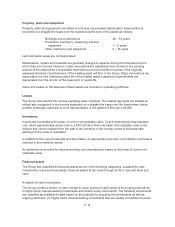 224
224 -
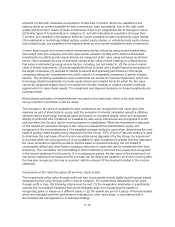 225
225 -
 226
226 -
 227
227 -
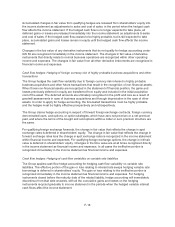 228
228 -
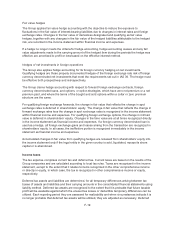 229
229 -
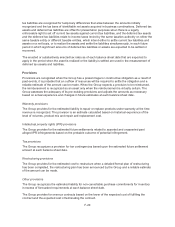 230
230 -
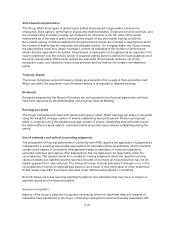 231
231 -
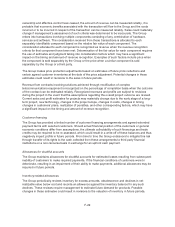 232
232 -
 233
233 -
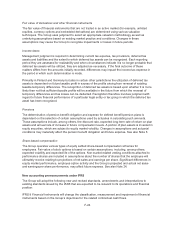 234
234 -
 235
235 -
 236
236 -
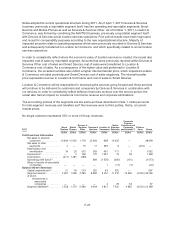 237
237 -
 238
238 -
 239
239 -
 240
240 -
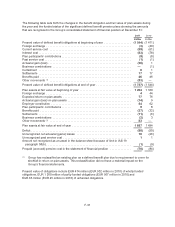 241
241 -
 242
242 -
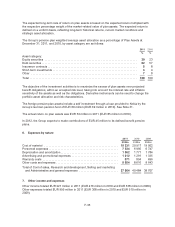 243
243 -
 244
244 -
 245
245 -
 246
246 -
 247
247 -
 248
248 -
 249
249 -
 250
250 -
 251
251 -
 252
252 -
 253
253 -
 254
254 -
 255
255 -
 256
256 -
 257
257 -
 258
258 -
 259
259 -
 260
260 -
 261
261 -
 262
262 -
 263
263 -
 264
264 -
 265
265 -
 266
266 -
 267
267 -
 268
268 -
 269
269 -
 270
270 -
 271
271 -
 272
272 -
 273
273 -
 274
274 -
 275
275 -
 276
276 -
 277
277 -
 278
278 -
 279
279 -
 280
280 -
 281
281 -
 282
282 -
 283
283 -
 284
284 -
 285
285 -
 286
286 -
 287
287 -
 288
288 -
 289
289 -
 290
290 -
 291
291 -
 292
292 -
 293
293 -
 294
294 -
 295
295 -
 296
296
 |
 |
Warranty provisions
The Group provides for the estimated cost of product warranties at the time revenue is recognized. The
Group’s warranty provision is established based upon best estimates of the amounts necessary to
settle future and existing claims on products sold as of each balance sheet date. As new products
incorporating complex technologies are continuously introduced, and as local laws, regulations and
practices may change, changes in these estimates could result in additional allowances or changes to
recorded allowances being required in future periods.
Provision for intellectual property rights, or IPR, infringements
The Group provides for the estimated future settlements related to asserted and unasserted past
alleged IPR infringements based on the probable outcome of potential infringement. IPR infringement
claims can last for varying periods of time, resulting in irregular movements in the IPR infringement
provision. The ultimate outcome or actual cost of settling an individual infringement may materially vary
from estimates.
Legal contingencies
Legal proceedings covering a wide range of matters are pending or threatened in various jurisdictions
against the Group. Provisions are recorded for pending litigation when it is determined that an unfavorable
outcome is probable and the amount of loss can be reasonably estimated. Due to the inherent uncertain
nature of litigation, the ultimate outcome or actual cost of settlement may materially vary from estimates.
Capitalized development costs
The Group capitalizes certain development costs when it is probable that a development project will
generate future economic benefits and certain criteria, including commercial and technological
feasibility, have been met. Should a product fail to substantiate its estimated feasibility or life cycle,
material development costs may be required to be written-off in future periods.
Business combinations
The Group applies the acquisition method of accounting to account for acquisitions of businesses. The
consideration transferred in a business combination is measured as the aggregate of the fair values of
the assets transferred, liabilities incurred towards the former owners of the acquired business and
equity instruments issued. Identifiable assets acquired, and liabilities assumed by the Group are
measured separately at their fair value as of the acquisition date. Non-controlling interests in the
acquired business are measured separately based on their proportionate share of the identifiable net
assets of the acquired business. The excess of the cost of the acquisition over Nokia’s interest in the
fair value of the identifiable net assets acquired is recorded as goodwill.
The allocation of fair values to the identifiable assets acquired and liabilities assumed is based on
various valuation assumptions requiring management judgment. Actual results may differ from the
forecasted amounts and the difference could be material. See also Note 9.
Assessment of the recoverability of long-lived assets, intangible assets and goodwill
The recoverable amounts for long-lived assets, intangible assets and goodwill have been determined
based on the expected future cash flows attributable to the asset or cash-generating unit discounted to
present value. The key assumptions applied in the determination of recoverable amount include
discount rate, length of an explicit forecast period, estimated growth rates, profit margins and level of
operational and capital investment. Amounts estimated could differ materially from what will actually
occur in the future. See also Note 8.
F-23
